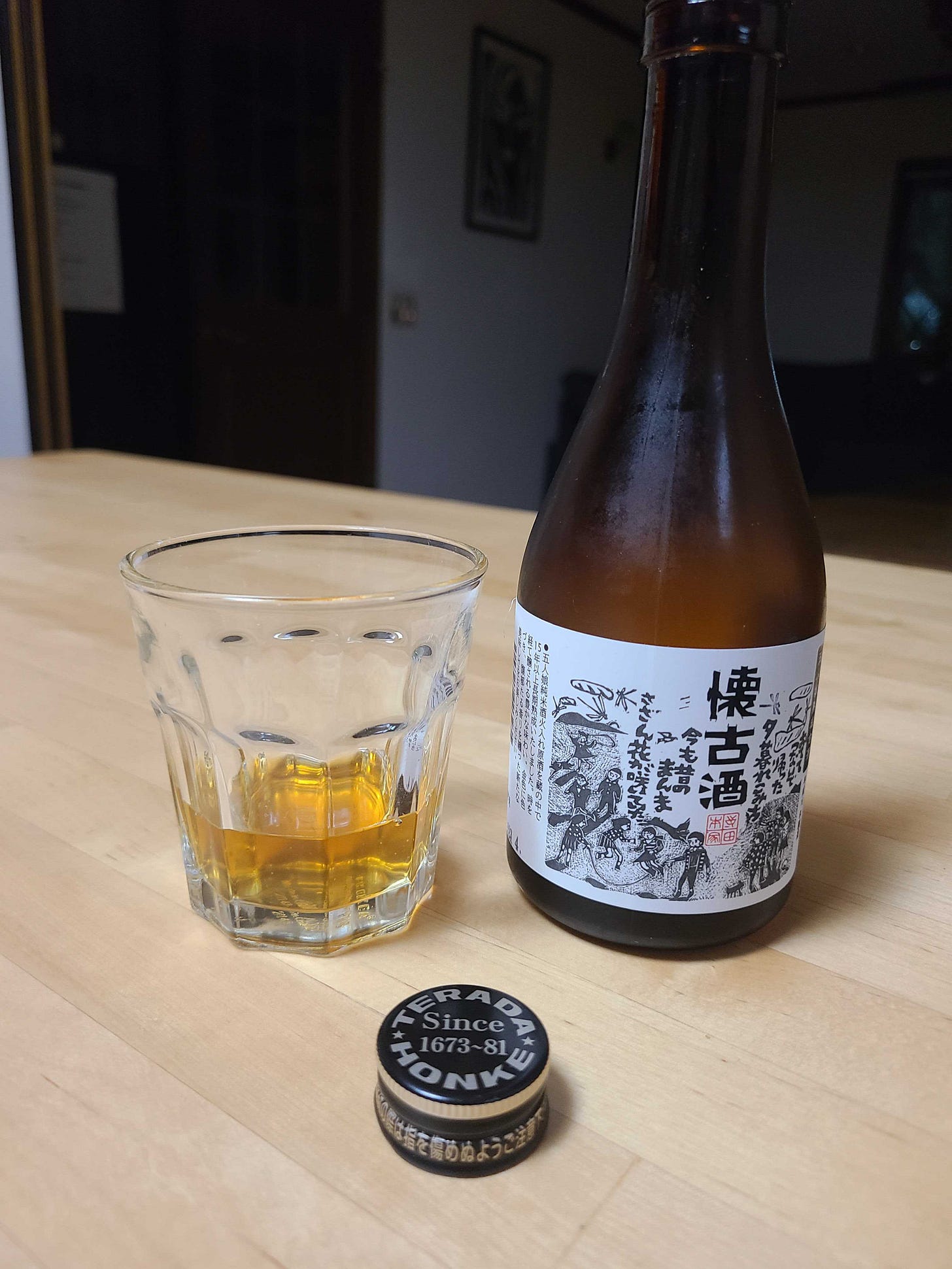I was fortunate enough to spend a lot of my time in various parts of Chiba one +weekend, a prefecture close to Tokyo in Japan. Not everything is directly taiko related, but things that I think can apply.
Terada Honke in Kozaki-ku is a 24th generational sake (Japanese fermented rice alcohol) company and within the last 20ish years switched to Edo style brewing, using natural micro-organisms. Through the help of Kazumi from Tawoo, I was able to get a tour of their brewery.
What’s funny about this photo? Answer: It’s in English!
I could tell you about what tour, but I think you’d learn more from their curated, thought out website. Hell, just skip the next 2 paragraphs and go to their website to gain your own interpretation:
https://www.teradahonke.co.jp/en/hakkoudou/
Through the brief lens of Emily, the tour consisted of multiple temperature controlled rooms. The workers wore traditional Japanese denim and tenugui. There were no steel aluminum barrels like you would typically see at beer breweries in most modern American cities. One room had a staircase leading underground to get under the giant oke (large wooden barrel) in order to light a fire to facilitate the fermentation process. Another completely wooden room was behind 2 seal tight doors where the workers mix koji (a necessary fungus for fermentation) with their hands. There were a few more rooms as well, and you could smell the process of fermentation evolving in each.
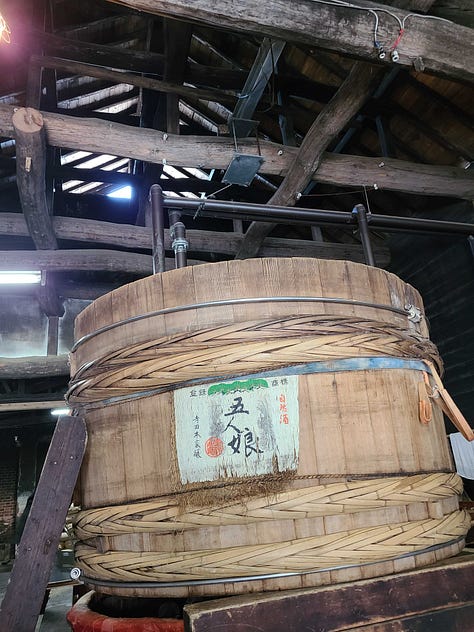

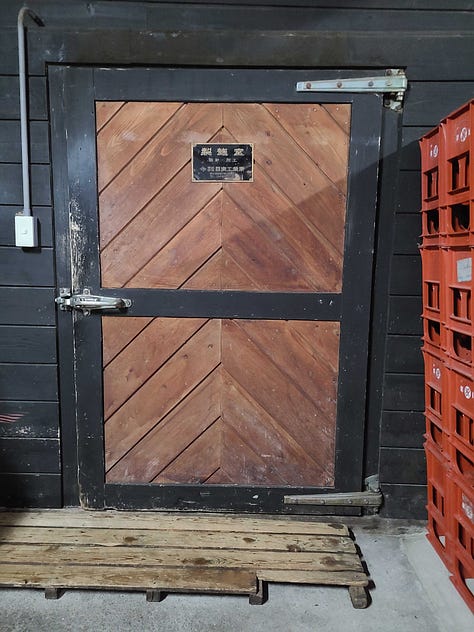
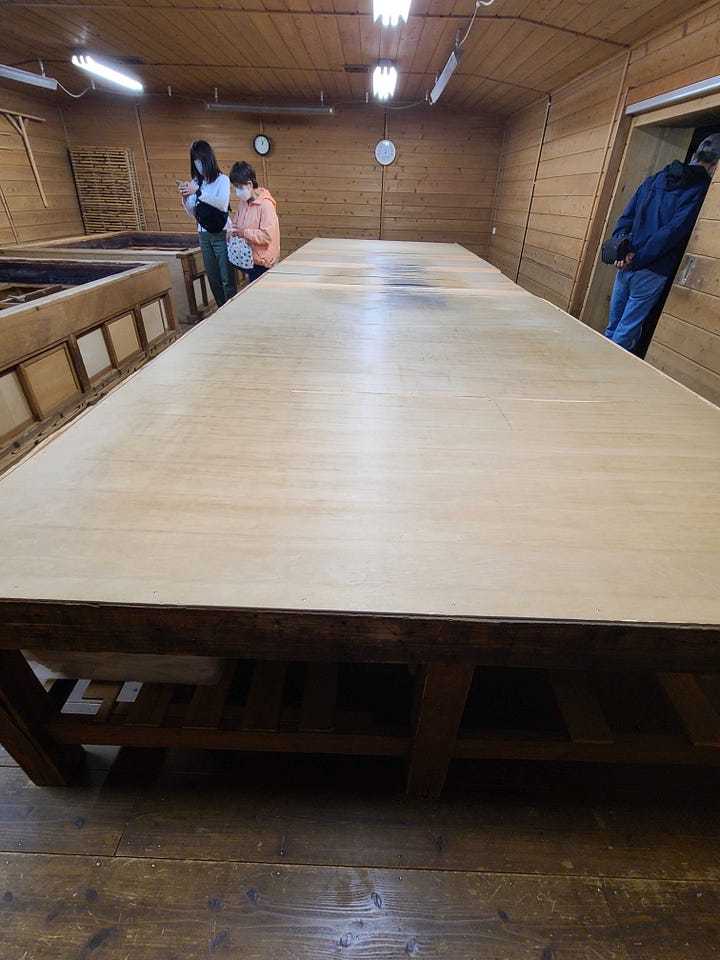
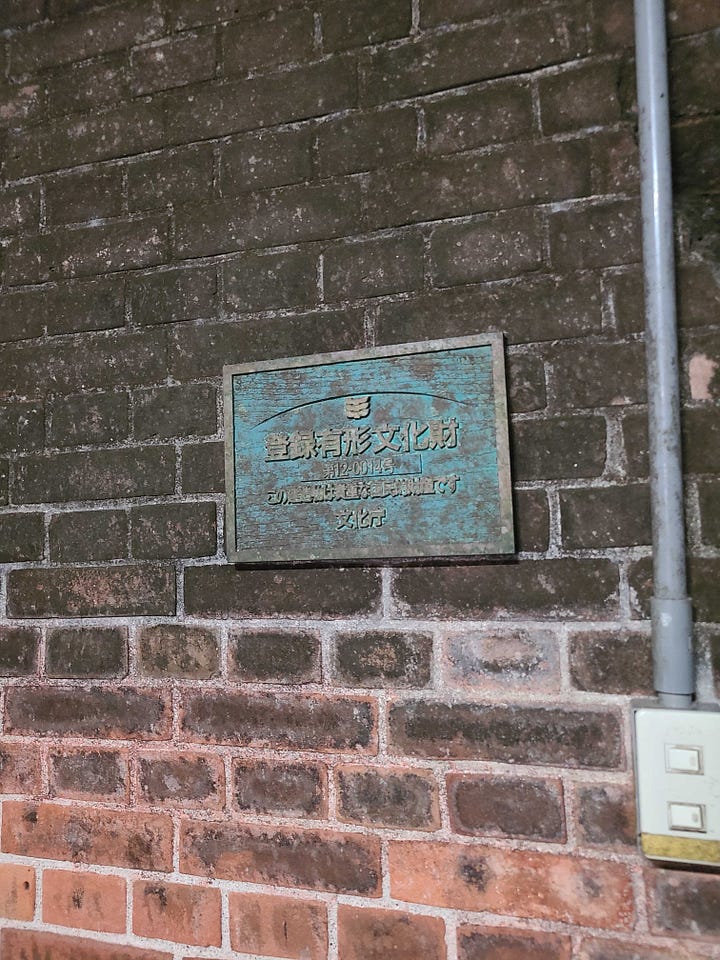
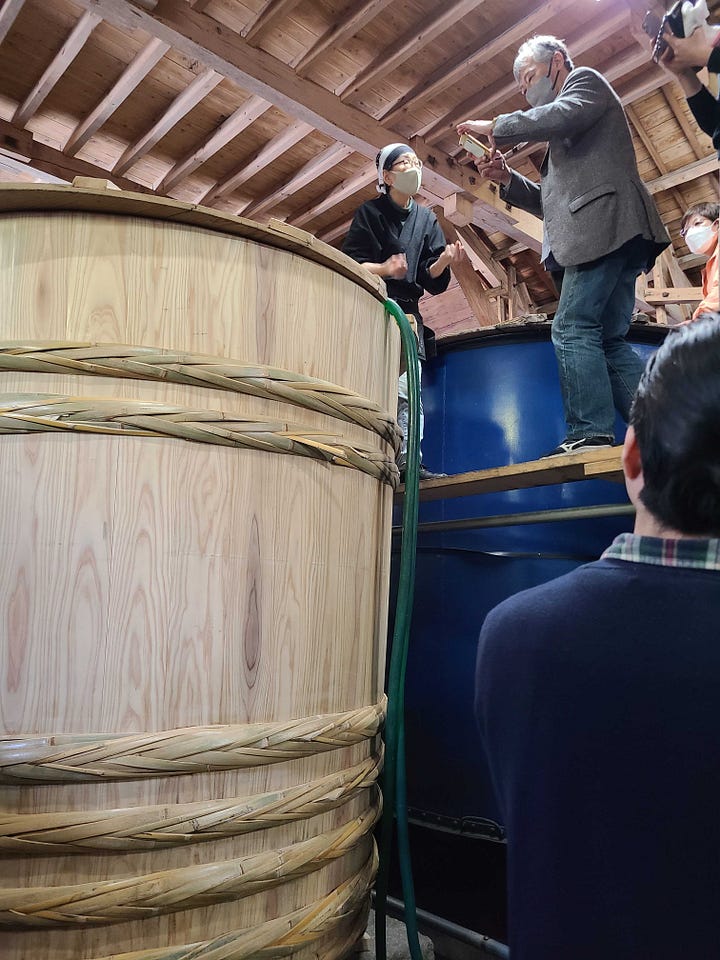
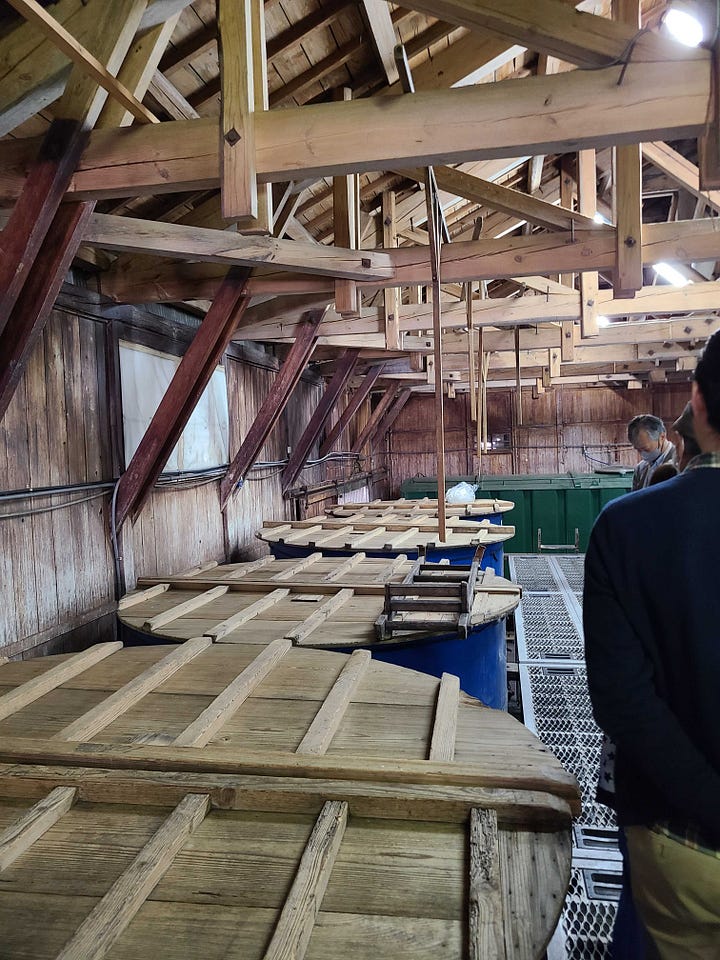
The tour was in Japanese (duh, I’m in Japan!) and I have no comparable experiences, but I was fortunate to meet 2 English speaking people: an after school teacher who focuses on micro-organisms and an upcoming Japanese black tea farmer moving to Kyushu. Over lunch, they were kind enough to explain a few key nuances like that most sake companies never actually touch the things that make up sake, (rice, koji, water), and so using this Edo style process allows the brewmasters to use their hands, becoming closer to the ingredients. There was also one room where they sing motosuri-uta, as part of the traditional way to connect with the microorganisms. Some people on the tours say that they feel a sense of ease as soon as they enter the not knowing that this is the room they sing in.
Again, I highly recommend going to their website for more information not about sake, but about the smallest particle and how it connects to life.
Ah, you’d rather check it out later? For now, here’s a sample passage to meditate on.
“No microorganism has the almighty power to get the job done alone. They always leave room for the next one to take over. It is the chain reaction of all the countless varieties of microorganisms that support and complement each other that keeps the successive relay rolling. Their collaborative style of interaction tells us that they are indeed “co-existing” and not “competing” with one another. That is a law of nature that we all learn to abide by.”
“Our body is also a huge fermentation factory, so to speak. Over 100 trillion microorganisms are living and co-existing within us. At Terada Honke, we sing songs while we work to express our joy and appreciation of this symbiotic harmony, wishing the microorganisms to also work happily and actively like us to fulfill their part of the fermentation process. We believe that our positive vibes will motivate the microorganisms in our body to work vigorously particularly when we enjoy our daily lives with excitement and sheer pleasure, filled with an overflowing sense of gratitude.”
“The microorganisms do not compare themselves with others to judge which are superior or inferior. All they care about is their own purpose in life, and they put in their utmost effort to fulfill it. When they know that there is nothing more that they can do, they simply leave a stage for other microorganisms to shine. We must follow in their footsteps. In other words, we must strive to stay humble, lead a beautiful life, be caring and friendly, be ourselves, and try to do things in ways that make us happy rather than what may be right. We believe that our awareness to change our mindset and behaviors according to what we learned from microorganisms will be the key to “fermenting” our daily lives.”
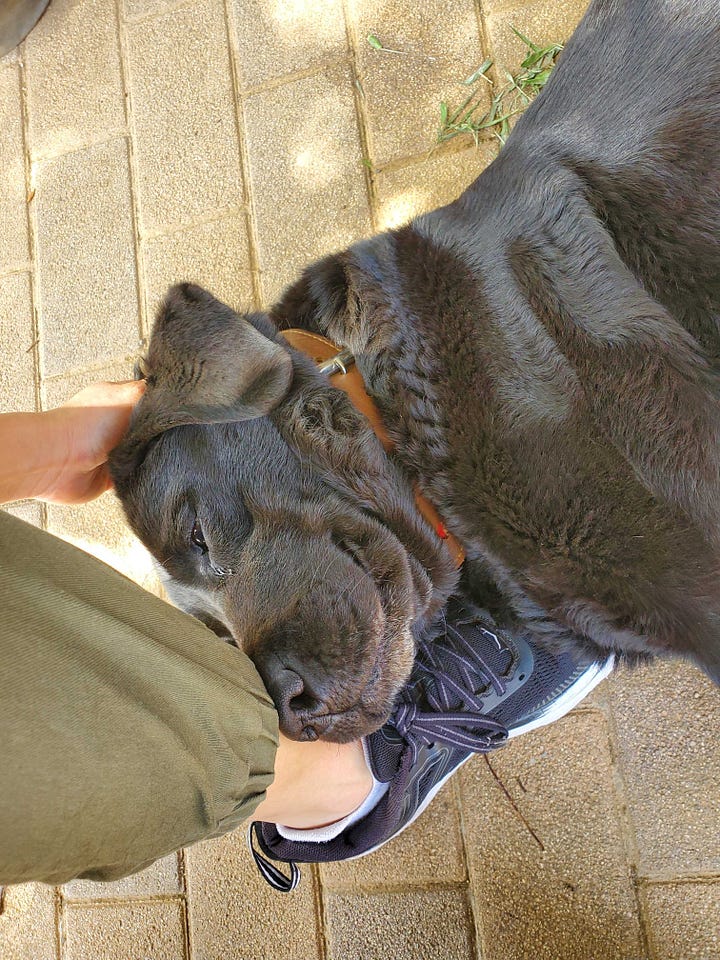
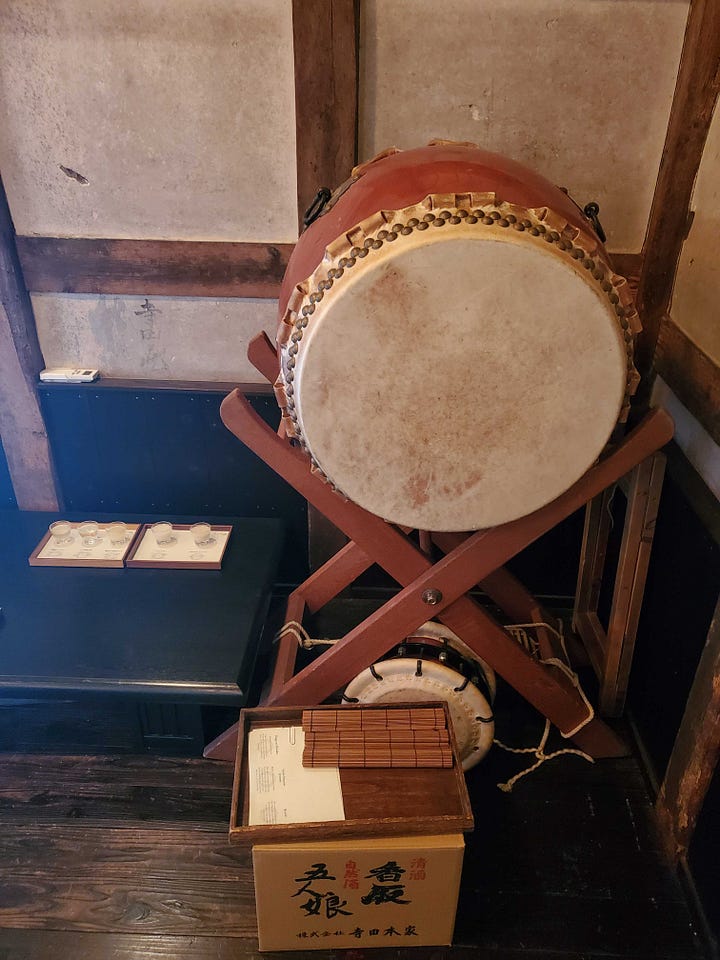
I have found many overlaps between Terada Honke’s philosophy with Kaoly san’s approach to taiko, which is probably why they’re friends. Rather than microorganisms doing their best and being themselves to create something harmonious, it’s the taiko people she leads. As opposed to competing and comparing myself to others’ while playing, I’ve reached the point of co-exisitng and accepting what my body can and cannot do in order to support the happy taiko people. Kaoly san has also guided Tawoo to the point where national and international Tawoo groups can form and share her pieces and teachings. But most importantly, in times of my frustrations or when the group is down on themselves, Kaoly san maintains this contagious happy, emotive, bright eyed state that makes it easier to move past frustrations.
There are a few pieces that involve singing and dancing, and sometimes, I feel like I’m faking happiness. I feel phony and begin to judge myself, or I’m busy thinking about the next part of the song. Perhaps, I need to learn from microorganisms and instead of focusing on “getting the piece right,” be joyful in the present moment and appreciate that I’m able to create this harmony despite language and cultural differences. Not to ignore the feeling, but rather to acknowledge how I’m feeling, ask myself why, and then let that feeling go for just a moment to enjoy what’s going on around me.
In America, I often find it harder to find happiness. In fact, I’ve felt guilt while feeling happy here. For me, the words “depression, anxiety, hate, stress, trigger” were more common than the opposing “happy and joy.” Although I do believe that these words hold truth to many in Japan, and still are present within myself, I’m trying to accept the present and hope to break through to feeling joyful in these little moments with singing and dancing that I may internally feel phony about. Can I just let go and live in the moment of the piece’s harmony and stop worrying about what others think? What these microorganisms and Kaoly san are crafting in life, can it work in America?
Oh, and food! This is a pic of the vegetarian noms at the cafe right next to Terada Honke featuring their koji and fermentation foods. Also, pro tip, when you travel outside of Tokyo, you’ll find local foods at the combini close to the train stations, and I usually have my eye out for the musubi. They tend to be bigger with more fillings that are locally sourced. I grabbed one stuffed with kombu that I gobbled and forgot to take a pic of. Whoops.
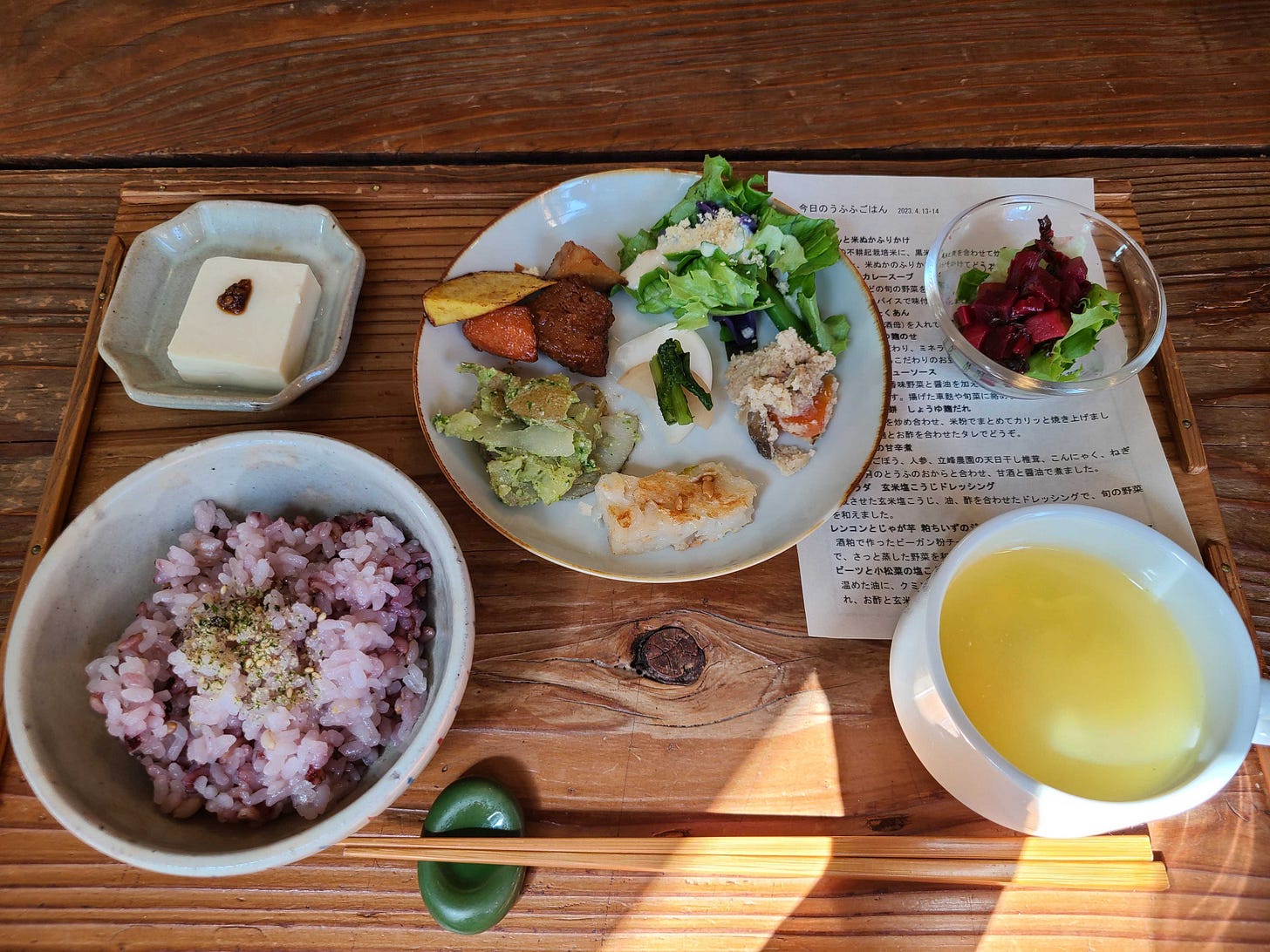
TBC.




